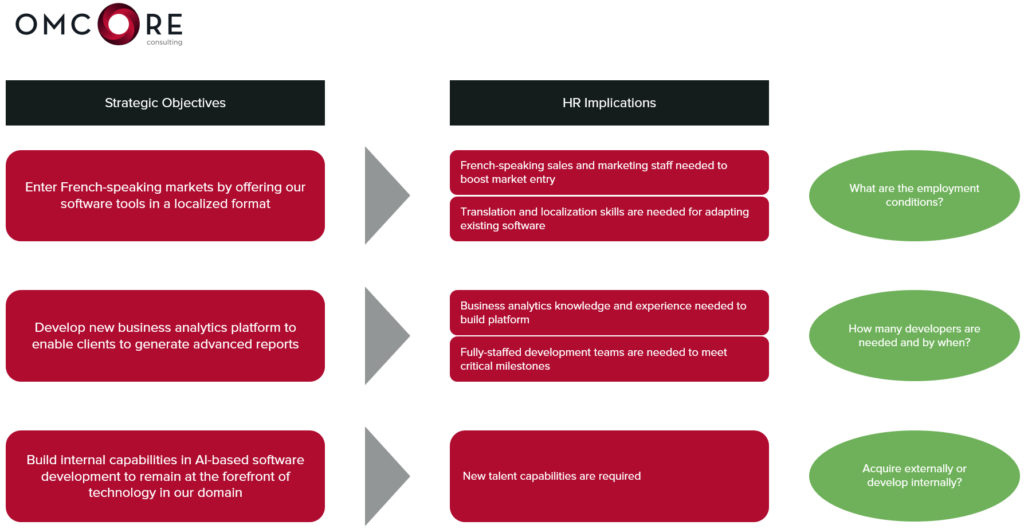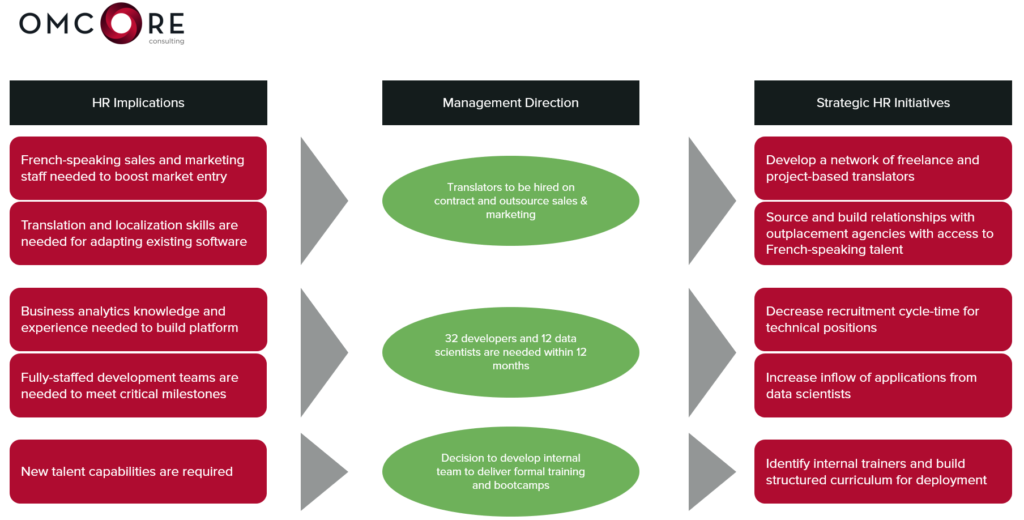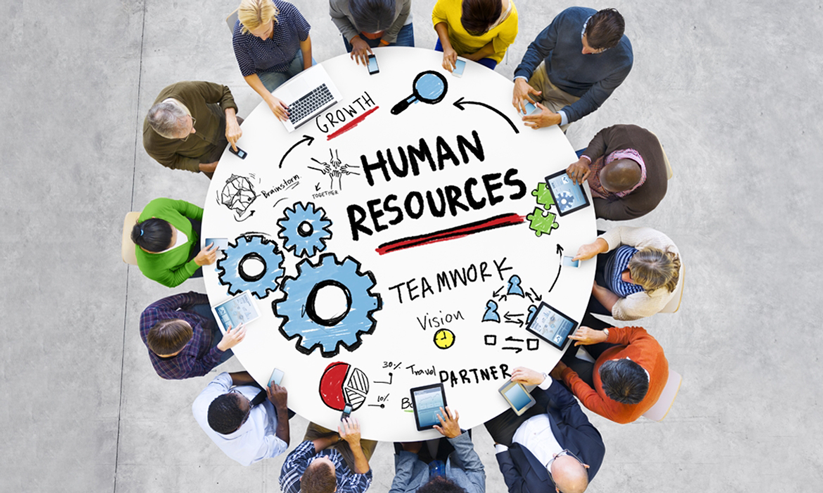The discussion around “HR as a strategic business partner” is not new, but with COVID-19 and the impact it’s having on companies worldwide, it’s worth revisiting the topic and its importance in our workplace today.
HR teams have been under a lot of pressure to develop and implement strategies for making remote work a success while managing their typical HR operations. This has triggered renewed interest in HR from senior executives, especially in companies where HR had been a dormant and reactive function, and has opened the door for HR to step into the C-suite.
The reason HR is sometimes an afterthought is because its leaders fail to prove HR’s value at the strategic level. Having worked with hundreds of global companies over the years, I genuinely believe that HR’s failure to become a strategic business partner is self-inflicted and not a result of bad company management or any other external factor.
In order for HR to become a strategic business partner, the company’s HR leader should successfully take the following actions:
Understand the Business
I am amazed at the number of HR professionals that don’t understand the ins and outs of what their companies do. HR leaders that don’t understand the business generally suffer from one or more of the following:
- They cannot explain the company’s strategy
- They don’t know or understand the company’s strategic market positioning
- They are unable to determine their role in achieving the company’s strategy
- They don’t understand what certain job roles or departments do within their company
- They don’t know all the products and services that their company offers
HR leaders have no chance of becoming a strategic partner if they don’t understand how their company functions and where it wants to go. To have a seat at the C-level strategic table, HR leaders must understand the business or their input will never be taken seriously or sought after.
As an HR leader, you don’t need years of experience at your firm to understand the business. A little bit of curiosity and effort is all it takes to acquire all the information stated above. Talk to department heads, engage with C-level executives, meet with employees, ask questions, and research internal data to learn more about the business.
Understand the Industry
Your company doesn’t operate in a vacuum. Competitors are always competing with you for customers and talent. As an HR leader, it’s your duty to understand the industry as much as you understand the company you work for.
To become a strategic partner, HR leaders must be able to navigate the industry’s landscape and remain up-to-date on all trends related to the market, innovation, workforce requirements, compensation benchmarks, and more.
Here are some tips to help HR professionals learn more about the industries they work in:
- Read industry publications such as magazines, newsletters, articles, etc.
- Attend industry-specific conferences and webinars
- Open communication channels with employees from your company’s core business functions
- Monitor news about your company and its competitors using internal (e.g. competitors’ analysis) or external information (e.g. news and media publications)
Focus on Solving Business Problems
The HR department exists to help the business achieve its strategic objectives through people. HR is not supposed to be an administrative function that only worries about compliance, attendance, and payroll. HR leaders need to get out of their administrative boxes and look at their function using a helicopter view.
Solving business problems starts with understanding HR’s role in achieving the company’s strategic objectives. Let me demonstrate this approach with an example:
Assume that you are an HR executive working at a B2B software company that has three main strategic objectives for the next calendar year:
- The company wants to enter French-speaking markets by offering their software products in the French language
- The company wants to develop a new business analytics platform as an add-on to existing software to enable clients to generate advanced reports and business insights
- The company wants to build internal capabilities in AI-based software development to remain on the cutting edge of technology and maintain its competitive advantage
Each of these strategic objectives has strategic HR implications, as demonstrated in the image below.

As you can see, each strategic objective requires HR interventions if the company wants to be successful in its ventures. Each of these HR implications also comes with multiple questions as shown in the Green bubbles.
To answer these questions, you will have to engage with the key stakeholders and provide guidance based on your experience. After you’ve done that, let’s assume that you received answers to your questions, which are shown in the Green bubbles of the image below.

Based on these answers, you are then able to define clear strategic HR initiatives that will directly impact the business by helping it to achieve its strategic objectives.
From the example, you can notice that the HR initiatives are deliberate and directly tied to the company’s objectives. Such initiatives are proactive in nature and give the business a competitive edge.
Embrace People Analytics
It’s no secret that the typical HR professional is not very data savvy. They mostly rely on operational reports that are reactive in nature and offer no real business insights. Reports such as employee attendance, employee expenses, and payroll data are examples. Although such reports are useful from an administrative perspective, they have no value from a strategic standpoint.
People analytics is the HR professional’s secret weapon to becoming a strategic business partner. Companies go through four maturity levels of people analytics:
- Operational Reporting: Reactive operational reporting that focuses on data accuracy, consistency, and timeliness
- Advanced Reporting: Proactive reporting for benchmarking and decision-making purposes that offers multi-dimensional analysis and dashboards
- Advanced Analytics: Statistical analysis to solve business problems, development of models, actionable solutions, and integrated data
- Predictive Analytics: Development of predictive statistical models, scenario planning, integration with strategic workforce planning, and risk analysis and mitigation
Most HR professionals get stuck at levels 1 or 2 due to a lack of integration between HR and non-HR data within the organization. In order for HR professionals to go up the people analytics maturity ladder, they need to upgrade their data analysis skills to start solving business problems using an evidence-based approach.
Building a people analytics function doesn’t happen overnight and companies have to go through each maturity stage, so it’s a multi-year journey to go from operational reporting to advanced analytics.
The amount of data our companies generate is staggering and it’s always logged somewhere within the organization. Leverage this goldmine of information to take a massive step in becoming a true strategic partner.
Build Internal Credibility & Trust
Relationships play a big role in your ability to access and influence business leaders. As an HR executive, you will only become a strategic partner when business leaders trust your knowledge and insights.
Don’t isolate yourself in the HR department. An HR leader should actively communicate with line managers, department heads, and executives to understand their challenges and what can be done to fix them. When you make the effort to understand and solve business-specific problems outside of your department, you start to build trust with business leaders.
Use your understanding of the company, its industry, and business strategy to make sense of the data you are monitoring. Go to business leaders with insights and get their opinions on your proposed interventions. Involve them in your analysis and pick their brains to learn their interests and uncover their concerns. This type of approach will develop your stakeholder management skills and significantly increase your level of credibility in the company.
Stay at the Forefront of HR
As the HR leader, you are expected to be the functional expert. It is your responsibility to remain up-to-date on the latest developments in the HR field. This allows you to keep innovating within your company as well as develop your team internally.
To maintain your status as an HR subject matter expert, try the following:
- Join professional HR associations in your location and participate in the community and its events
- Regularly read books and articles in the HR domain
- Attend HR conferences and network with other HR professionals
- Accept invitations to speak at HR conferences
- Commit to a self-paced learning program to continuously develop your HR skills
Take the Lead on Change Management
It seems like the pace of change keeps increasing with no slowdown in sight. In such volatile times, only the adaptable companies will survive.
People, by nature, don’t like change and their first reaction is to resist it. The HR department is generally the best candidate to navigate a company through change because it’s all about transitioning people from the current state to the intended future state.
Change initiatives typically involve shifts in company culture, operating model, organization structure, and so forth. HR leaders should be involved in assessing change readiness and developing appropriate change management and communication strategies.
Furthermore, HR has access to all the people data in the organization, so they are best equipped to track the performance of change initiatives and take proactive corrective measures when needed.
Develop Digital HR Skills
The COVID-19 pandemic forced the working world to accelerate its adoption of a digital workplace. Companies that never thought of working remotely are now forced to do so to maintain productivity in these tough economic times.
By digital skills, I’m definitely not referring to your Zoom capabilities! Think of digital skills in terms of digitizing and automating your HR operational workflows. HR departments that still rely on manual work for completing routine tasks are not strategic. A big chunk of their time is wasted on repetitive tasks that can be easily automated. If you’re still tracking attendance and calculating payroll using Excel sheets, then you’re wasting your time on non-strategic tasks.
Always ask yourself: Can I automate this task? If the answer is yes or maybe, then there’s a good chance that you can automate it.
Do some research on HR technology and relevant trends. You’ll learn a lot about what is possible, and you’ll be surprised by how cost effective HR technology has become! Experiment with technology solutions and engage HRIS vendors to assist you in implementing solutions that meet your company’s needs.
Digitizing your HR operations will allow your HR team to focus on doing real HR work that benefits the company instead of wasting time on redundant and low-value work.





